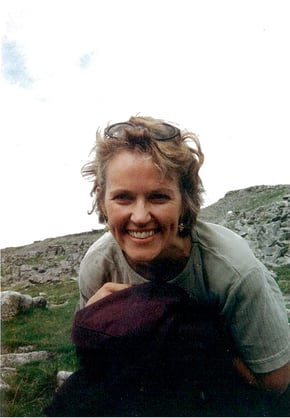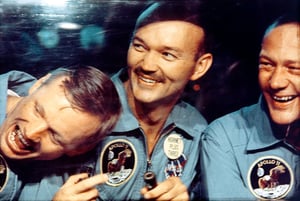Approximately 650 million people around the world watched the harrowing landing of Apollo 11’s lunar module, and Neil Armstrong’s historic first step and memorable words: "One small step for man: one giant step for mankind."
Ask anyone who the astronauts were on that historic mission and most people will remember the names Neil Armstrong (at least) and Buzz Aldrin. These two walked on the surface of the moon for two and a half hours, ranging about 300 feet from the lunar module (LM), known as the Eagle. They planted the American flag in its soil, collected samples, left boot prints in the sand, and deployed devices for three experiments (two devices remained behind, the laser ranging retroreflector, operating until 1981!).
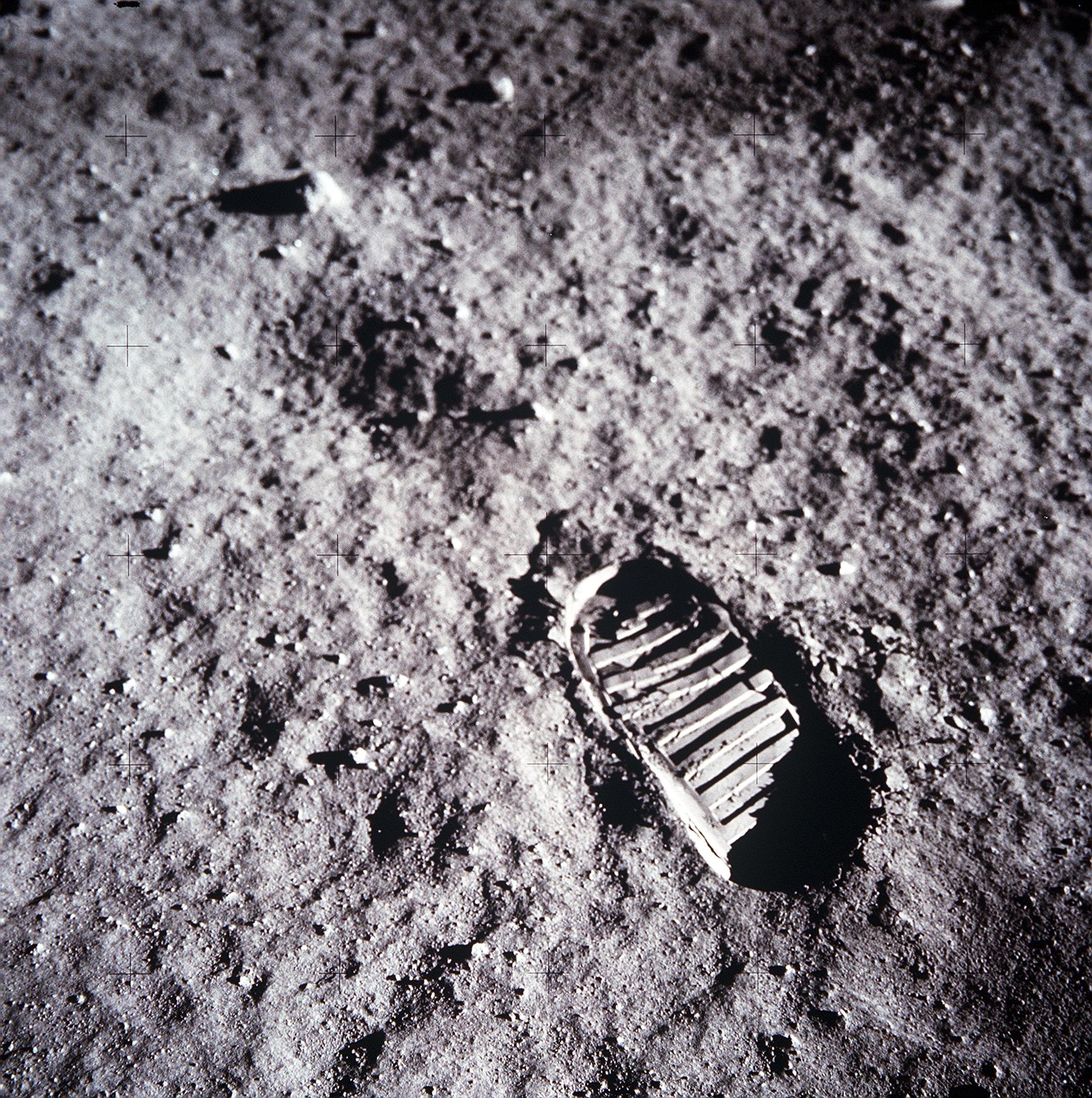 Bootprint on the Lunar Surface / NASA
Bootprint on the Lunar Surface / NASA
There was a third man, however, who played an almost hidden but key role in the historic moon mission: command module pilot, Michael Collins.
The third astronaut: from “army brat” to astronaut
Michael Collins was born in Rome, Italy, in 1930, to US military attache, James Lawton Collins and wife, Virginia Stewart. The family moved around during his early and teen years, including a stay in Puerto Rico, where he had his first plane ride.
In spite of his mother’s hope that he would join the diplomatic service, Collins followed in the footsteps of his father and older brother, James Lawton Collins Jr., and attended West Point, graduating in 1952.
Instead of staying with the army, Collins chose to join the recently established (1947) United States Air Force. His training as a fighter pilot included advanced fighter training with F 86 Sabres.
In 1960, Collins was admitted to the USAF Experimental Flight Test Pilot School at Edwards Air Force Base, California. However, after witnessing the Mercury Atlas 6 flight of John Glenn on February 20, 1962, he applied for the second group of astronauts called for by NASA that year. He was not accepted, but reapplied and was accepted in June, 1963.
From Gemini 10 to Apollo 11
Collins first launch into space was the successful Gemini 10 mission in 1966. During this 3-day mission, the spacecraft had to dock with two target vehicles and, in the course of repairs and experiments, Collins performed two spacewalks.
These experiences prepared him well for his role as CM Pilot of the Columbia, Apollo 11’s command module.
Some key memories and reflections
In this interview, Collins recalls key memories that can also be found in his autobiography, Carrying the Fire: An Astronaut’s Journey
On the launch
The Command Module (Columbia) and the Lunar Module (Eagle) were mounted on a huge Saturn V rocket. Forty years of dreaming and engineering were behind the development of the most powerful rocket ever built. Three hundred sixty-three feet in length and powered by liquid hydrogen, oxygen and kerosene, the Saturn V roared to life. Collins recalls feeling every vibration and movement as they were propelled at 25 thousand miles per hour towards the moon.
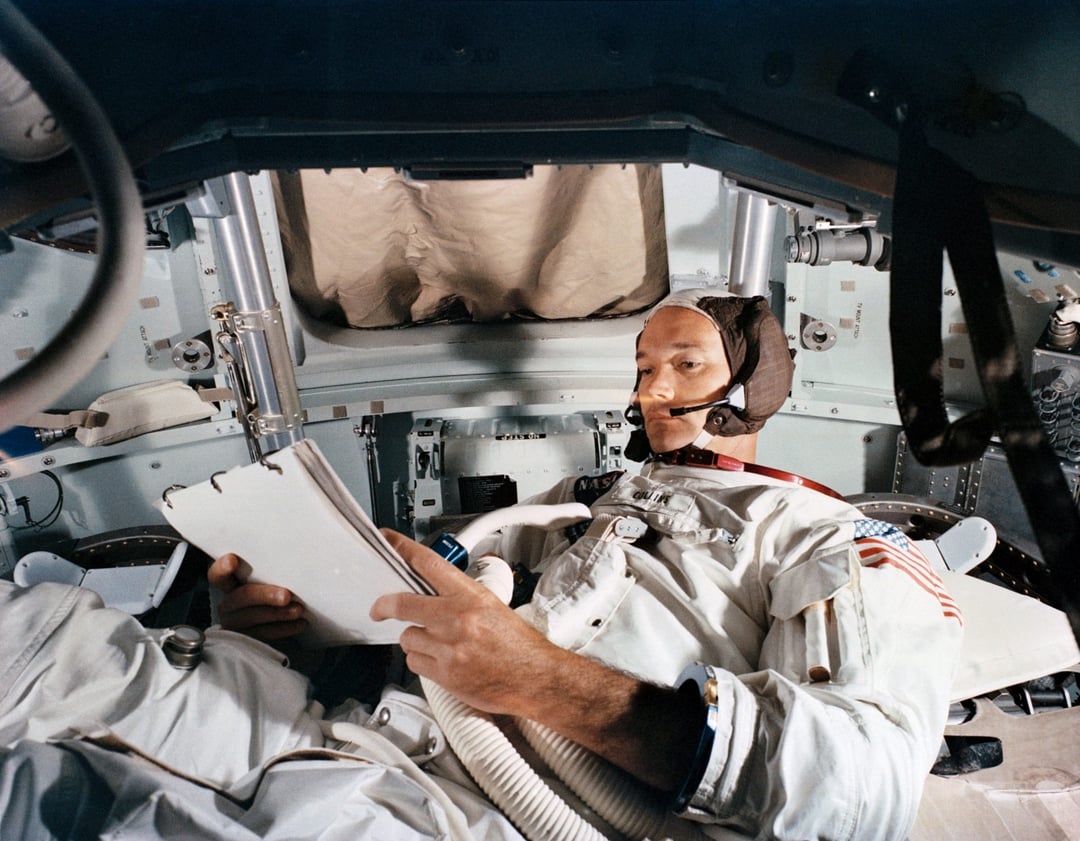 Command Module pilot Michael Collins practices in the CM simulator on June 19, 1969, at Kennedy Space Center / NASA
Command Module pilot Michael Collins practices in the CM simulator on June 19, 1969, at Kennedy Space Center / NASA
The first maneuver involved the separation of the CM from the Saturn V rocket and then turning around to “grab” the Lunar Module from the rocket. The LM’s surface was extremely thin, so this action had to be performed with precision. Collins remembers seeing the walls of the Lunar module ripple as they approached!
Day 4, July 20
Collins recalls a dramatic view of the moon, a halo around it created by the sun. He observed how huge the moon appeared, its features rising up with 3 dimensional clarity. Later, on the far side of the moon, he would marvel at the smooth and accurate process by which the Columbia and Eagle were captured by lunar gravity and held in orbit.
Then, feeling “like a father whose teenage sons are taking the car out alone for the first time,” Collins sealed Armstrong and Aldrin in the Eagle and cut them free. On the radio transmission, however, his parting words were simply, “See you later.”
Alone, but not lonely
Acutely aware of the essential role he played in the success of the mission, Collins strongest emotion was feeling the responsibility of “getting all three of us home in one piece.” NASA and MIT engineers had developed a manual of rescue procedures—what Collins should do in multiple worst case scenarios at any stage of landing or recovery. He actually wore a notebook around his neck during this time so they would be immediately accessible. He managed to memorize 18 of these elaborate procedures!
Even when Columbia’s circling orbit brought him to the far side of the moon again, and he really was alone—the only known living creature from there to the far reaches of outer space—his feelings were not of loneliness. He recalls feeling more “awareness, anticipation, satisfaction, confidence, almost exaltation.”
Communication was key
The descent of the Eagle to the moon’s surface was less than smooth. With 13 minutes to touchdown, the Eagle was descending too fast, and at 12 minutes, radio transmission broke down. There was a tremendous amount of unanticipated “noise” (to the astronauts it sounded like a howling wind) and ground control did not have enough data to make the decision to continue or abort the mission. As data finally came in and computer issues were resolved, signals to the Eagle were still blocked. Communication had to be relayed through Collins in Columbia to the Eagle.
Partially piloted manually by Armstrong at the end, the Eagle avoided massive boulders and avoided landing in a crater. Safe at last on the surface in the Sea of Tranquility, they were only 4 miles downrange from the original landing site. After 4 hours of preparation and some rest, the astronauts emerged from the Eagle—Armstrong first, followed by Aldrin 20 minutes later.
After Armstrong and Aldrin spent 21 hours and 36 minutes on the moon's surface, more than 2 ½ of them outside the Eagle, the ascent stage engines fired up. The Eagle was propelled into orbit. At that time, Collins was on his 25th lunar revolution. On the 27th revolution, the Eagle successfully docked with Columbia. Within 4 minutes, Armstrong and Aldrin re-entered the command module.
Collins was no longer alone.
The rest of the story
The three astronauts did make it home safely. On July 24, forty-four hours after leaving lunar orbit, re-entry procedures were initiated. Apollo 11 splashed down in the Pacific Ocean where it was recovered successfully by the USS Hornet.
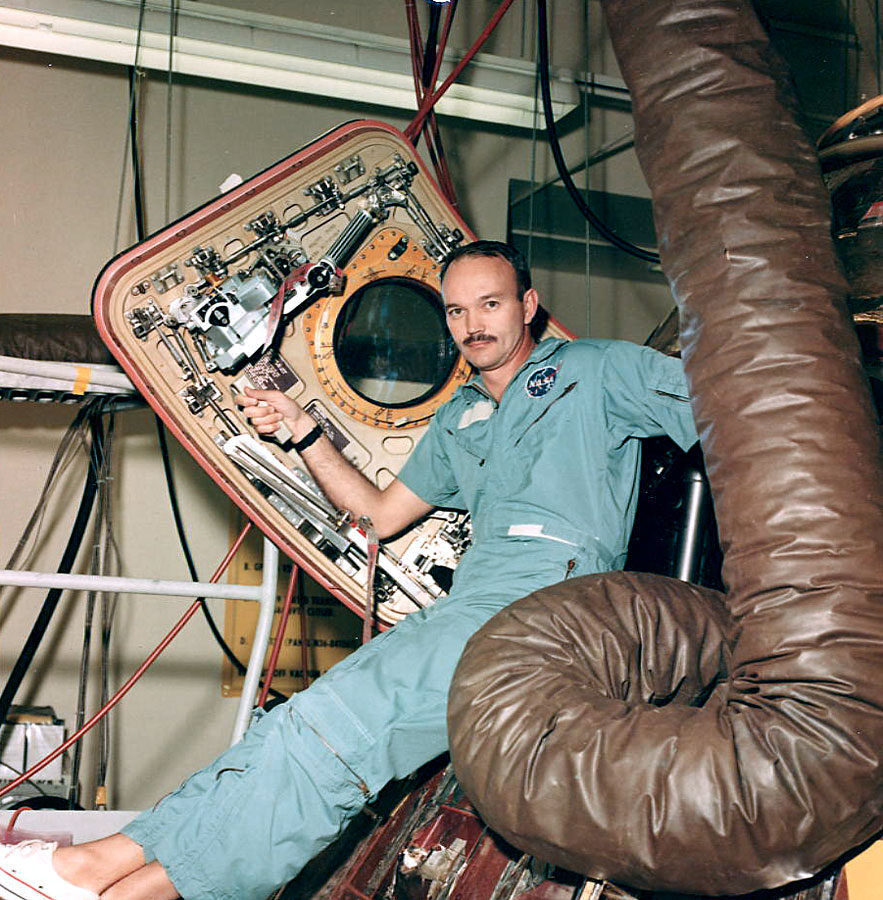 Michael Collins sitting in the hatch of the command module after the Apollo 11 flight / NASA
Michael Collins sitting in the hatch of the command module after the Apollo 11 flight / NASA
Later that year, in September, the astronauts embarked on a 38-day world tour that brought them to 22 foreign countries and included visits with prominent world leaders, including Pope Paul VI. The pope’s words are worth recalling:
“Man has a natural urge to explore the unknown, to know the unknown; yet man has also a fear of the unknown… Your bravery has transcended this fear and through your intrepid adventure man has taken another step toward knowing more of the universe.” -Pope Paul VI
As we look back on the astounding triumph of the Apollo 11 mission, may it fill us with awe and wonder of the Creator of all that is.
Where were you when they landed on the moon? NASA wants to know!
For the BBC's coverage of Apollo 11’s 50th anniversary, click here. Also, this National Geographic article has lots of graphics and fascinating details that go beyond the Apollo 11 story.
Where were you when they landed on the moon? NASA wants to know! There is still time to share your story here.
Cover Image: On July 24, 1969, the Apollo 11 crew splashed down in the Pacific Ocean / NASA
Read Also:
NASA at 60: Moon Shadows and Music
49 Years Later, the Moon Landing Still Astounds Us
2018 Ends with Historic First—and 2019 Gets Off to a Spectacular Start
